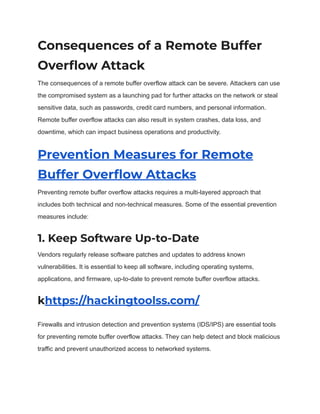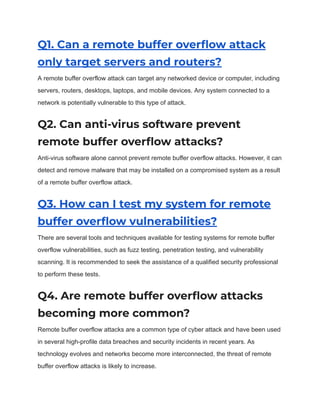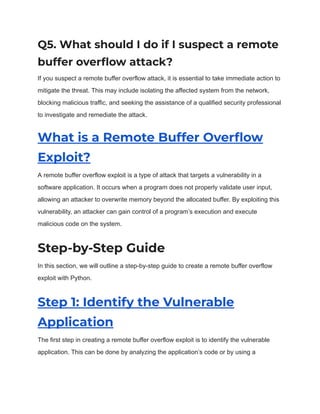The document details the concept of remote buffer overflow attacks, which exploit software vulnerabilities to gain unauthorized access to networked devices. It outlines the mechanisms of such attacks, their severe consequences, and essential prevention measures, including software updates and strong authentication. Additionally, it provides a step-by-step guide to creating a remote buffer overflow exploit using Python.









